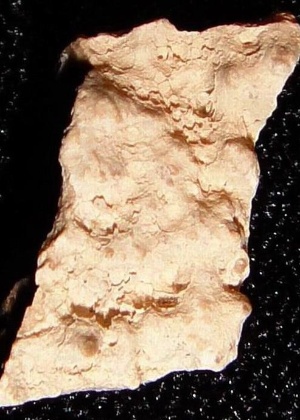Pesquisadores fazem inventário geológico de São Paulo
23 de março de 2017
Peter Moon | Agência FAPESP – Há 260 milhões de
anos, no período Permiano médio, boa parte do Estado de São Paulo era
coberta pelas águas do mar Irati. Uma das evidências mais fascinantes
desse antigo mundo marinho está em Santa Rosa do Viterbo, na região de
Ribeirão Preto. Lá, o trabalho de extração em uma mina de calcário
revelou a existência de diversos estromatólitos gigantes.
 Foram selecionados e classificados
de acordo com valor científico e risco de degradação 142 sítios para
compor o Patrimônio Geológico do Estado (foto: campo de estromatólito gigante de Santa Rosa do Viterbo (SP) / divulgação)
Foram selecionados e classificados
de acordo com valor científico e risco de degradação 142 sítios para
compor o Patrimônio Geológico do Estado (foto: campo de estromatólito gigante de Santa Rosa do Viterbo (SP) / divulgação)
Estromatólitos são estruturas sedimentares formadas pela atividade de
microalgas em águas rasas. As algas vivem em “tapetes”, que crescem
verticalmente ao longo de milhares de anos para formar estromatólitos,
assim como ocorre com os recifes de coral.
Estromatólitos estão presentes em todo o mundo, mas quase sempre são
pequenos. Em Santa Rosa do Viterbo não é assim. Lá há um excepcional
campo de estromatólitos gigantes, com até 3 metros de altura. O local é
único no planeta e um dos 142 geossítios selecionados para compor o
Patrimônio Geológico do Estado de São Paulo.
O trabalho de seleção dos sítios geológicos levou três anos, de 2012 a
2015, e foi liderado por Maria da Glória Motta Garcia, professora no
Instituto de Geociências da Universidade de São Paulo e coordenadora do
projeto de pesquisa
apoiado pela FAPESP.
Ela teve assessoria do geólogo português José Brilha, do Instituto de
Ciências da Terra da Universidade do Minho, em Braga, Portugal.
O levantamento envolveu uma equipe de 16 pesquisadores, composta por
geocientistas da USP, Universidade Estadual de Campinas (Unicamp),
Universidade Estadual Paulista (Unesp), Universidade Federal da São
Carlos (UFSCar), do Instituto Florestal e do Instituto Geológico do
Estado de São Paulo e da Universidade Federal do Paraná – além de 13
outros profissionais da área de geociências.
Resultados do inventário do Patrimônio Geológico do Estado de São Paulo foram publicados no periódico
GeoHeritage.
Coube aos coordenadores fazer o levantamento dos sítios com potencial
para integrar o inventário, explica Maria da Glória Garcia. “Chegou-se
assim a um total de 193 geossítios, dos quais foram selecionados os 142
mais relevantes”, disse.
“Os sítios foram classificados de acordo com uma lista com 11 marcos
de referência geológica, como por exemplo terrenos pré-cambrianos,
riftes continentais, unidades geomorfológicas e formas de relevo, ou
cavernas e sistemas de carste, entre outra categorias”, disse a
pesquisadora, que é coordenadora do Núcleo de Apoio à Pesquisa em
Patrimônio Geológico e Geoturismo (GeoHereditas).
O objetivo final do trabalho foi classificar os sítios geológicos
pelo valor científico e risco de degradação, “de modo a estabelecer
prioridades de manejamento e geoconservação”.
Entre os 142 geossítios selecionados há locais importantes dos pontos
de vista tanto científico quanto turístico. Exemplos que aliam ambas as
perspectivas são duas grutas. Uma delas é a caverna da Tapagem,
popularmente conhecida como Caverna do Diabo, a maior gruta do Estado de
São Paulo, no Parque Estadual de Jacupiranga, município de Eldorado, no
sul do estado.
A segunda caverna fica na mesma região. Trata-se da Caverna Santana,
no Parque Estadual Turístico do Alto Ribeira (Petar), uma das mais
significativas do Brasil em termos dos seus espeleotemas (estalagmites,
estalactites e formações rochosas similares).
Outro geossítio de importância geomorfológica e turística é o Pico do
Itapeva, de 2.025 metros de altura, na divisa entre Pindamonhangaba e
Campos do Jordão.
A montanha, na Serra da Mantiqueira, é formada por
granitos e gnaisses muito antigos, pré-cambrianos, portanto com mais de
550 milhões de anos. Do seu cume avista-se o Vale do Paraíba e, ao
fundo, a Serra do Mar, o que dá o toque turístico ao geossítio.
O Vale do Paraíba, aliás, é um vale de rifte, aberto por forças
tectônicas que culminaram na formação da Serra da Mantiqueira e da Serra
do Mar. No período Oligoceno, todo o vale era coberto por um paleolago,
o lago Tremembé, que tem este nome por causa dos terrenos que o formam,
pertencentes à formação geológica Tremembé.
O geossítio a ser preservado, neste caso, fica na mina de argila da Sociedade Extrativa Santa Fé, em Tremembé.
Trata-se do mais importante sítio fossilífero do período Paleógeno
[entre 66 e 23 milhões de anos atrás] brasileiro. Foi nas argilas da
mina que o doutor Herculano Alvarenga, diretor do Museu de História
Natural de Taubaté, descobriu em 1982 os fósseis quase completos de uma
ave do terror – terror birds, classificadas nas ordens Gastornithiformes e Cariamiformes –, o predador de topo do paleolago há 22 milhões de anos.
Deserto no Jurássico
Outro registro de lagos, só que muito mais antigo, fica em Itu. O
Parque do Varvito foi criado onde ficava a Pedreira Itu, onde por mais
de um século se extraíram lajes de varvito para a pavimentação das
calçadas da cidade.
O varvito é uma rocha sedimentar composta de argila e silte. Neste
caso, a pedreira era o fundo de um lago glacial, quando São Paulo era
coberto por geleiras em algum momento do Permo-Carbonífero.
No quesito geomorfológico, um dos geossítios selecionados foi o Morro
do Diabo, no parque estadual homônimo, em Teodoro Sampaio, no extremo
oeste do estado, divisa com o Paraná. O morro de 600 metros de altura é
formado por depósitos de arenito das antigas dunas do deserto Caiuá.
Trata-se de um enorme deserto que cobria o centro-sul do Brasil no
período Jurássico, há 170 milhões de anos, quando a América do Sul
encontrava-se colada à África e o nosso país ficava no centro do
supercontinente Gondwana.
Segundo Maria da Glória Garcia, o levantamento seguiu a metodologia
criada por José Brilha, por ele empregada na elaboração do inventário do
Patrimônio Geológico de Portugal.
“Diversos países europeus estão realizando ou já possuem o inventário
dos seus patrimônios geológicos, como é o caso de Portugal. No momento,
Portugal e Espanha estão dando um passo além, selecionando o melhor dos
seus inventários para estabelecer o Patrimônio Geológico da Península
Ibérica”, disse.
No Brasil, o trabalho da Comissão Brasileira de Sítios Geológicos e
Paleobiológicos (SIGEP) merece destaque. Foram publicadas listas com
algumas dezenas de geossítios no país, destacados na série
Sítios Geológicos e Paleontológicos do Brasil, em que os pesquisadores nacionais sugeriram sítios geologicamente importantes.
“O inventário completo e sistemático, utilizando métodos bem
definidos, dos geossítios do Estado de São Paulo é um trabalho pioneiro
no Brasil e na América do Sul. Esperamos que, no futuro, mais estados
realizem o levantamento do seu patrimônio geológico, permitindo assim
que, aos poucos, seja criado um inventário brasileiro”, disse.
Entre os próximos passos do trabalho as prioridades são passar os
dados do inventário ao Instituto Geológico do Estado de São Paulo e
criar um site na internet com informações dos 142 geossítios.
“A lista completa foi entregue apenas como relatório técnico à Capes
[Coordenação de Aperfeiçoamento de Pessoal de Nível Superior]. É
importante que este inventário sirva de subsídio para que o patrimônio
geológico seja incluído na gestão do território, seja na criação de leis
adequadas de proteção, no geoturismo e na popularização da ciência”,
disse Maria da Glória Garcia.
O artigo
The Inventory of Geological Heritage of the State of São Paulo, Brazil: Methodological Basis, Results and Perspectives (doi:10.1007/s12371-016-0215-y), de Maria da Glória Motta Garcia e outros, pode ser lido em
http://link.springer.com/article/10.1007/s12371-016-0215-y.
O artigo
Inventory and Quantitative Assessment of Geosites and Geodiversity Sites: a Review, de José Brilha, pode ser lido em
http://link.springer.com/article/10.1007/s12371-014-0139-3.





